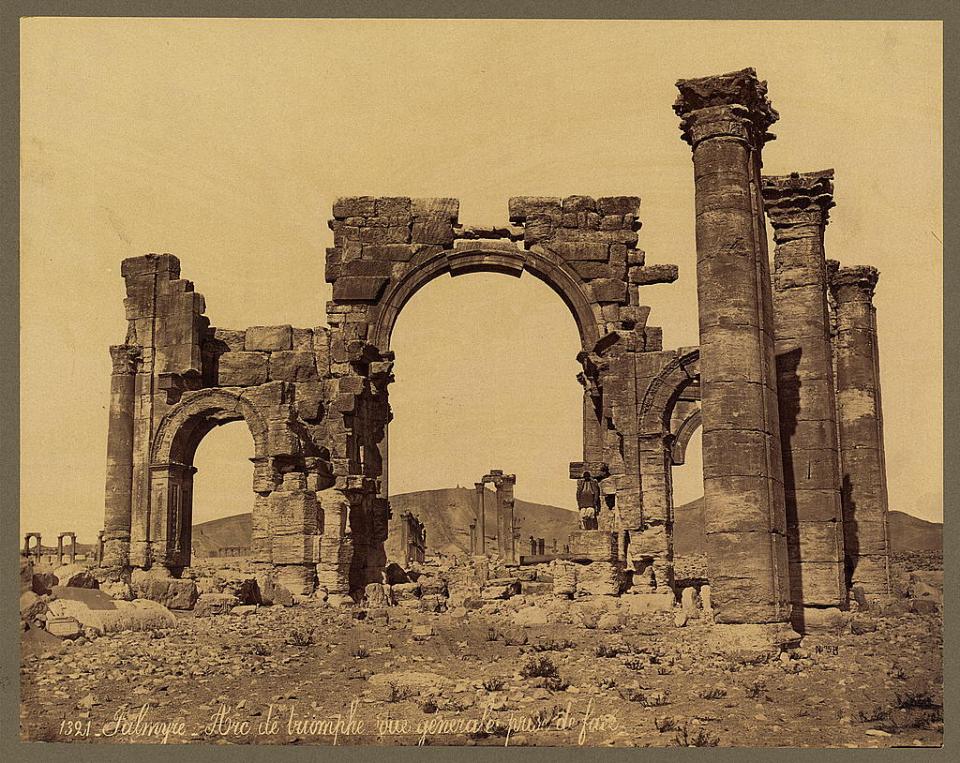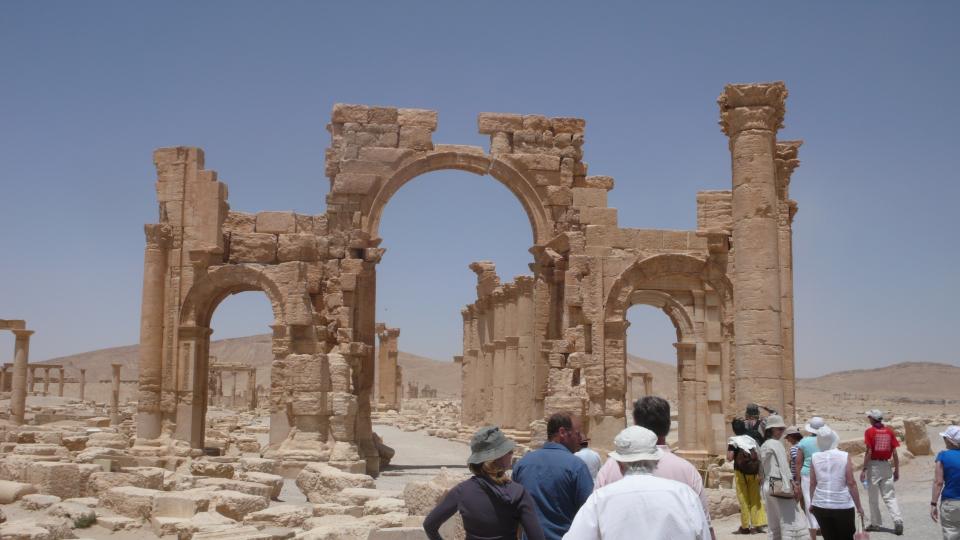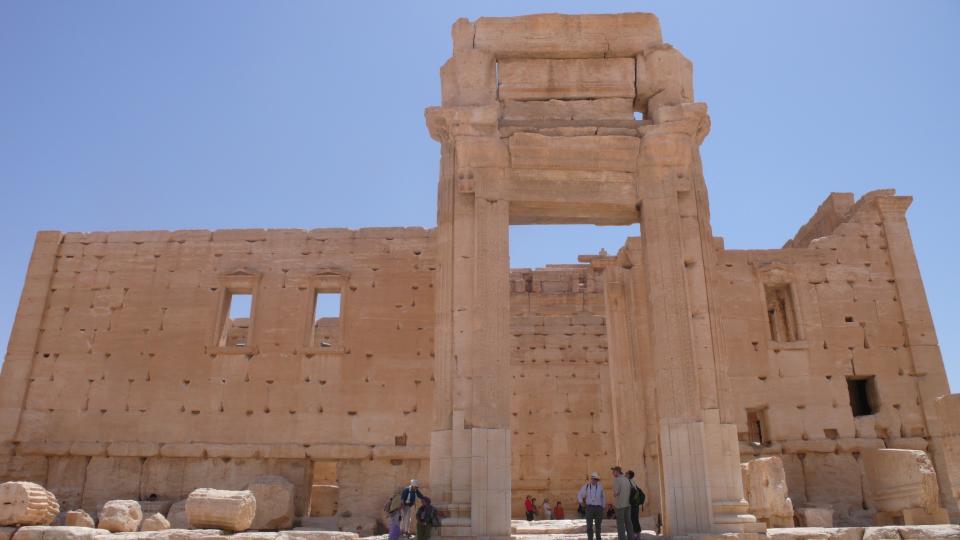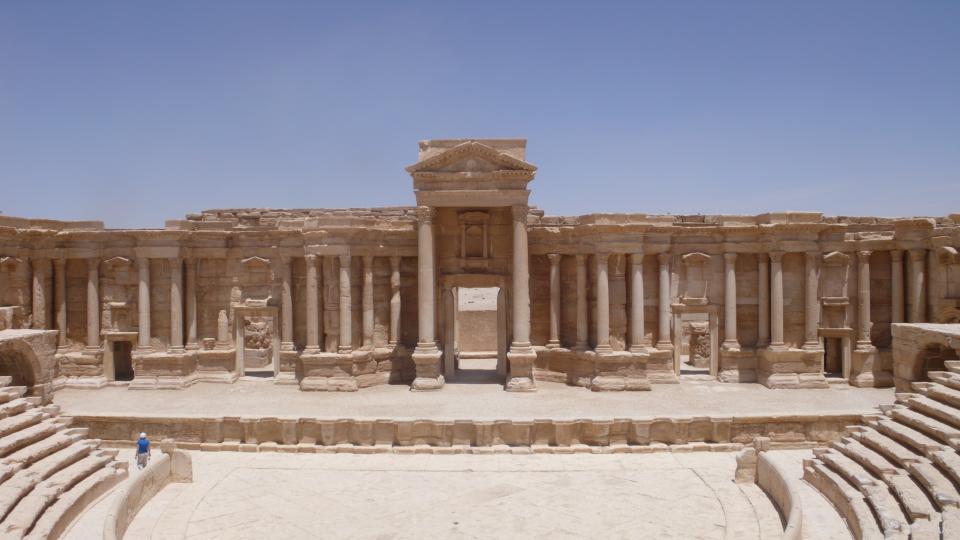About the Artist
Gavin Hamilton
Born: Murdieston, Scotland, 1723
Died: Rome, 4 January 1798
Nationality: Scottish
Collection
National Gallery of Scotland, Edinburgh
Documentation
Jonah Siegel notes that Wood and Dawkins didn’t really discover the ancient city of Palmyra:
“Wood and Dawkins did not in any real sense discover Palmyra. It was known to Europe from classical texts and the Bible and it was first visited by a modern European in 1691. It would be more accurate to say that the men retrieved Palmyra’s image by means of the extraordinary edition of prints, The Ruins of Palmyra, which they published in London in 1753, only five years before Hamilton immortalized them in this canvas. The cultural impact of the voyage and the book was impressive. James Grainger’s 1760 ode ‘Solitude,’ opens with a description of Palmyra drawn directly from Wood and Dawkins. Much of Diderot’s account of the sublime of ruins in his Salon of 1767 was based on images from the same text, either directly or in adaptations by Hubert Robert. Hazlitt’s 1821 evocation of ‘a fallen column in Tadmor’s marble waste that staggers and over-awes the mind, and gives birth to a thousand dim reflections’ reveals that the link between the place and a sublime response to the past was long-lasting. Palmyra is what we might term a good ruin. Said to have been built by Solomon and referred to in Roman history, for all its physical decay it nevertheless buttressed received notions of the past. Also, the dead city was located far enough away from Europe that it was almost impossible to visit; it had to be retrieved in verbal description or in engraved images.”
Jonah Siegel, Desire and Excess: The Nineteenth-Century Culture of Art (Princeton: Princeton University Press, 2000), 31-2.



